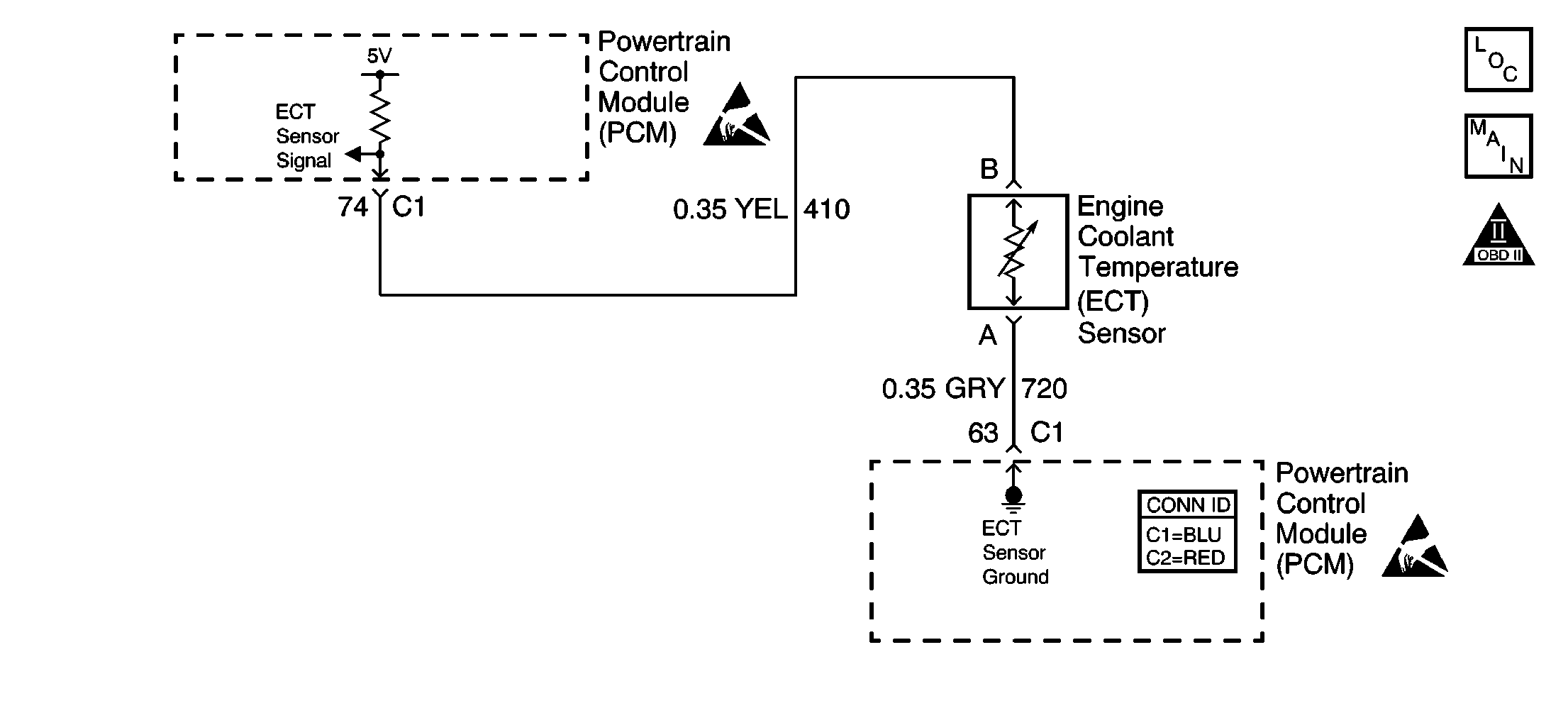
Circuit Description
In order to reduce the engine temperature the powertrain control module (PCM) has the ability to disable a number of fuel injectors during an engine over temperature condition. The PCM considers the engine over temperature whenever the engine coolant temperature (ECT) reaches a predetermined temperature. This DTC sets in order to show that the PCM detected an over temperature condition and that the system engaged the protection mode.
The PCM sends the instrument panel cluster (IPC) engine coolant temperature information via the Class 2 circuit. This information is used for controlling the coolant temperature gauge and for displaying a message when the coolant temperature is out of the normal operating range. The IPC displays a message when the engine coolant temperature is more than 121°C (250°F).
Conditions for Running the DTC
| • | No active ECT DTCs |
| • | The engine is running. |
Conditions for Setting the DTC
| • | The engine coolant temperature is 132°C (270°F) or more. |
| • | The above conditions are present for more than 10 seconds. |
Action Taken When the DTC Sets
| • | The PCM illuminates the malfunction indicator lamp (MIL) when the diagnostic runs and fails. |
| • | The PCM records the operating conditions at the time the diagnostic fails. The PCM stores this information in the Freeze Frame and the Failure Records. |
| • | The message center displays a message. |
| • | The PCM alternately disables 4 injectors. |
Conditions for Clearing the MIL/DTC
| • | The PCM turns OFF the malfunction indicator lamp (MIL) after 3 consecutive ignition cycles that the diagnostic runs and does not fail. |
| • | A last test failed, or current DTC, clears when the diagnostic runs and does not fail. |
| • | A history DTC clears after 40 consecutive warm-up cycles, if no failures are reported by this or any other emission related diagnostic. |
| • | Use a scan tool in order to clear the MIL and the DTC. |
Diagnostic Aids
Important: Remove any debris from the PCM connector surfaces before servicing the PCM. Inspect the PCM connector gaskets when diagnosing or replacing the PCM. Ensure that the gaskets are installed correctly. The gaskets prevent water intrusion into the PCM.
Important:
• The PCM enables the engine coolant over temperature mode when
coolant temperature exceeds 132°C (270°F). Engine damage still
could occur if the customer operates the vehicle too long in an overheat
condition. Ensure no engine mechanical conditions exists after the
overheat condition is repaired. • If an overheating condition exists, repair the overheat condition
and change the engine oil and filter. • Using the Freeze Frame and Failure Records data may aid in locating
an intermittent condition. If you cannot duplicate the DTC, the information
included in the Freeze Frame and Failure Records data can help
determine how many miles since the DTC set. The Fail Counter
and Pass Counter can also help determine how many ignition cycles
the diagnostic reported a pass or a fail. Operate the vehicle
within the same Freeze Frame conditions, such as RPM, load, vehicle
speed, temperature etc., that you observed. This will isolate
when the DTC failed. For an intermittent condition, refer to
Symptoms
.
Test Description
The number below refers to the step number on the diagnostic table.
Step | Action | Value(s) | Yes | No |
|---|---|---|---|---|
Did you perform the Powertrain On-Board Diagnostic (OBD) System Check? | -- | Go to Engine Overheating in Engine Cooling |
